Si bien Taiwán reivindica culturalmente sus raíces a través de la colección impresionante del Museo Nacional del Palacio, por otro lado trata de definirse en el presente y ver hacia el futuro con su Museo de Arte Contemporáneo, el MOCA Taipei. Al igual que el CAPC de Bordeaux, este es también un museo de arte contemporáneo instalado en un edificio antiguo: el MOCA está ubicado en la sede de una escuela que fue construido en la época de la ocupación japonesa en el país. Funcionó como sede de la alcaldía desde 1945 hasta 1994 y desde el 2001 funciona como museo y colegio simultáneamente.
En esta ocasión pude asistir a la exposición llamada “Invisibleness is Visibleness: International Contemporary art collection of a Salaryman – Daisuke Miyatsu”, que reúne sesenta y un obras de las más de trescientas que posee el coleccionista japonés Daisuke Miyatsu. El interés de presentar sus obras reside en el hecho que este es un hombre de clase media, un asalariado común y corriente, que resulta ser un gran apasionado por el arte contemporáneo y por ende colecciona desde hace diecisiete años, gracias a los frutos de una vida modesta… y de tener dos trabajos. Esta exposición no es entonces sobre los artistas, algunos muy reconocidos por cierto; no responde a un concepto o historia subyacente, es más bien una especie de homenaje al coleccionista, al vínculo que puede formarse entre un individuo promedio y el complejo mundo del arte.
La exposición refleja igualmente el protagonismo creciente de los coleccionistas, comerciantes y especuladores en el mercado del arte, tendencia que es explicada en el libro “Grandes y pequeños secretos del mundo del arte”, pero aquí se ve que Miyatsu se separa de todos ellos al no poseer esos defectos que están modificando la forma en que consumimos el arte. Para empezar, las intenciones de Miyatsu al coleccionar parecen ser honorables ya que con recursos limitados adquiere obras que tienen un significado personal para él, que reflejan sus gustos o intereses más que las tendencias del mercado o la fama o relevancia del artista en cuestión. Eso hace que no se dedique a revender obras, lo que lo distingue de los especuladores que pretenden enriquecerse gracias a adquisiciones hechas en el pasado que súbitamente han ganado valor. Tampoco se dedica a atesorar piezas que esconde del público, por el contrario, las exhibe como en esta ocasión y asegura que va a donar todas sus obras a un museo cuando muera. Considera que su posición como coleccionista es más una vocación o hasta una “adicción” más que un pasatiempo y se ve a sí mismo como un verdadero guardián o protector de toda pieza que logra obtener. Y más que comprar por el sólo hecho de poseer, las obras que tiene muchas veces son recuerdos de las interacciones o hasta amistades que ha podido tener con los artistas, algo que considera esencial para descifrar el arte actualmente. Lo único que podría traicionarlo y poner en duda toda la imagen que la exposición quiere proyectar de Miyatsu es una frase de su propio libro en la que invita a los que se interesen en arte a que empiecen su propia colección porque es posible que “entre las piezas que usted posea se encuentren las obras maestras de mañana”. En ese sentido, la validación de un artista o de una obra por parte del circuito museístico o de los críticos de arte parece todavía ser más importante que el interés personal del coleccionista. Casi hace sospechar que vale la pena comprar cualquier cosa y hacerse amigo de cuantos artistas sea posible porque en un futuro puede resultar beneficioso.
Sobre las obras en sí, tiene pinturas, dibujos, esculturas y obras de video (que se requiere mucho tiempo para ver), pero la cúspide de la exposición desde mi punto de vista es la “Dream house”: el proyecto de la casa personal de Miyatsu, cuyo concepto primario es mezclar arte contemporáneo y arquitectura o mejor dicho, construir una casa que refleje su condición como coleccionista. Para eso ha llamado a varios artistas, que son conocidos o amigos suyos con quienes ha colaborado desde el inicio de este proyecto en 1999 y que todavía se encuentra en ejecución. En la exposición se puede ver la maqueta, un mural con planos y fotos y por supuesto, algunas de las obras que se encuentran en la residencia propiamente dicha.
Al final, se podría considerar el mensaje implícito de la exposición no sólo como que el arte contemporáneo es accesible a todos, en el sentido que puede llegar a interesar, involucrar y a ser comprendido por un hombre normal, pero es aún más atrevida al demostrar que el arte es también accesible desde un punto de vista financiero por cualquiera, a condición que tenga pasión y paciencia (y dos trabajos!). 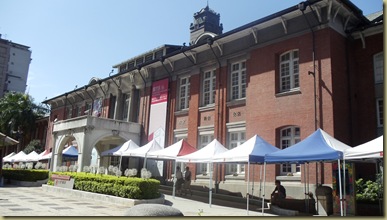
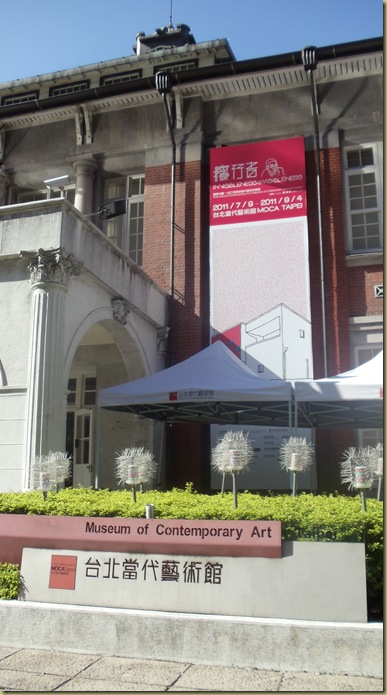
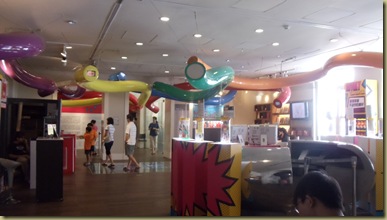
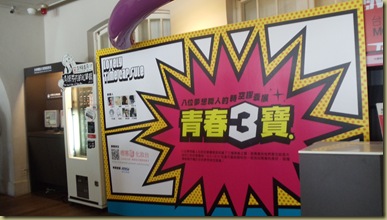
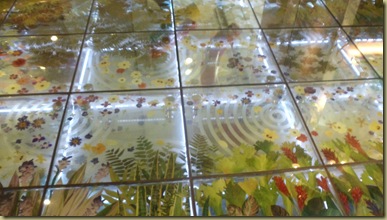
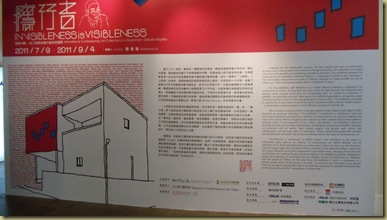
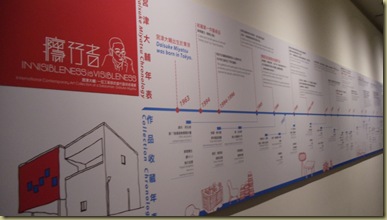
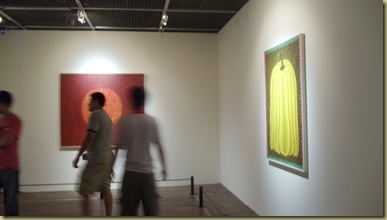
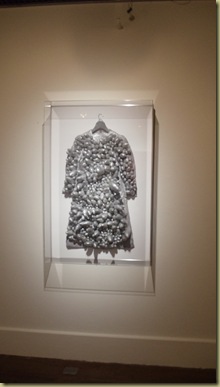
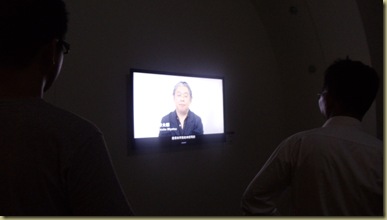
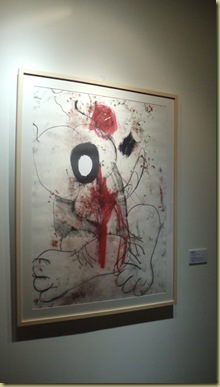

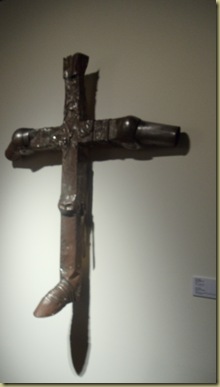
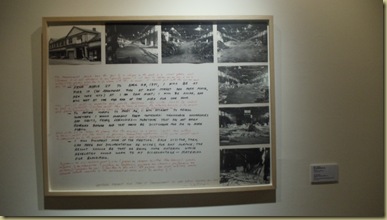
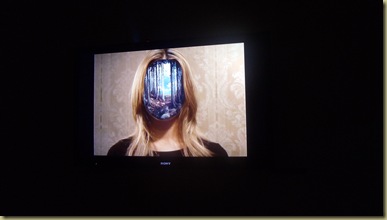
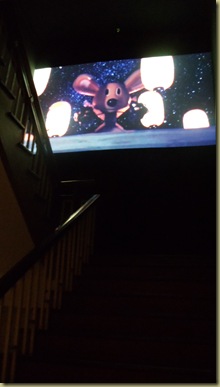
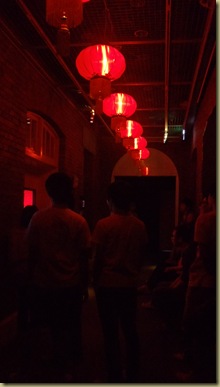
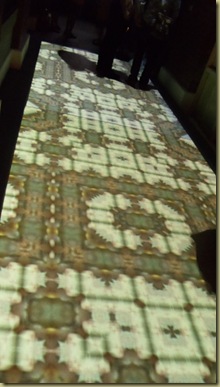
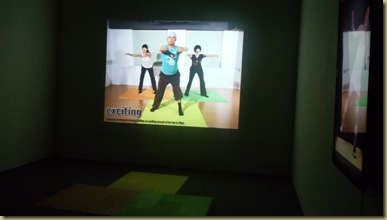
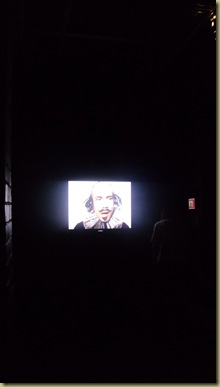
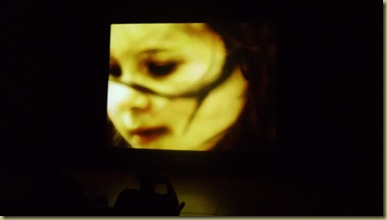

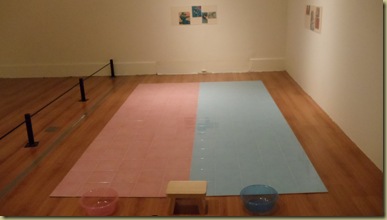
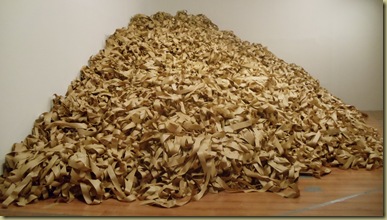
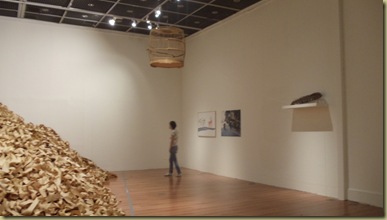

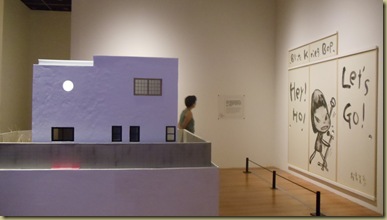

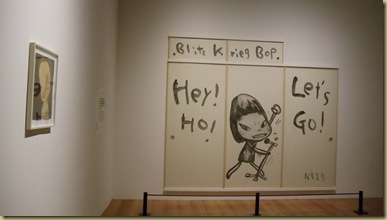
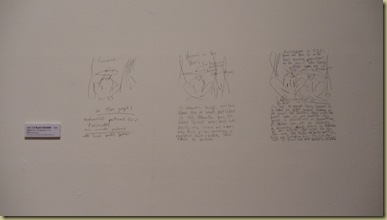
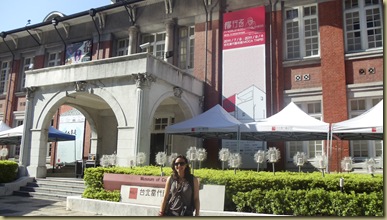
Although Taiwan reivindicates culturally its roots through the National Palace Museum’s impressive collection, on the other hand it tries to define itself at the present moment and sees into the future with its Museum of Contemporary Art, MOCA Taipei. Just like Bordeaux’s CAPC, this is a contemporary art museum installed in an old building: the MOCA can be found in the former headquarters of an Elementary school built during the Japanese occupation in Taiwan. It then housed the City Hall from 1945 to 1994 and since 2001 it functions as a museum and a High school simultaneously.
This time I got the opportunity to see the exhibit called “Invisibleness is Visibleness: International Contemporary art collection of a Salaryman – Daisuke Miyatsu”, that show sixty-one works of the more than three hundred owned by the Japanese collector Daisuke Miyatsu. The interest of showing his works resides in the fact that he is a middle class man, a normal salary man who turned out to be a great contemporary art lover and for that reason he collects art since seventeen years ago, thanks to the fruits of his modest life… and his having two jobs. This exhibit is consequently not about the artists, some very well-known by-the-way; it’s not about a certain concept or story, it’s more like a tribute to the collector, to the connection that can be formed between an average person and the complex art world.
Additionally, the exhibit reflects the collector’s, trader’s and speculator’s growing spotlight in the art market, a trend that is explained in the book “Big and little secrets of the art world”, but here you can see that Miyatsu can be set aside from all of them by not having the defects that are modifying the way we consume art. For starters, Miyatsu’s intentions in collecting seem to be honorable because with limited resources he buys works that hold a personal meaning for him, that reflect his tastes or interests more that the market tendencies or the artist’s fame or relevance. This is why he doesn’t sell away the pieces he owns and that fact separates him from all the speculators who want to get rich through the works they have bought in the past and have suddenly become valuable. Also he doesn’t hide away the works he has from the public and to the contrary, he shows them at every chance he gets, like this time, and says that he will donate all of the pieces he has acquired to a museum when he dies. He thinks that being a collector for him is more of a personal calling or even an “addiction” and not just a hobby, and he sees himself as a true guardian or protector of every piece he gets a hold of. And even more than buying just for the sake of owning, the works of art he has are some sort of memorabilia of the interactions or even friendships he has been able to establish with the artists, something he considers essential to decipher today’s art. The only thing that could be used against him and put into question the whole image the exhibit wants to project of Miyatsu is a sentence from his own book in which he invites whoever has an interest in art to start their own collection because it’s possible that “within the works you possess are the masterpieces of tomorrow”. From that point of view, the artist’s or a work’s validation through the museum and art critic’s circuit seems more important than the collector’s personal interest. It almost makes you think that it’s worth to buy anything and be friends with as many artists as possible because it could prove to be helpful in the future.
About the pieces themselves, the exhibit shows paintings, drawings, sculptures and videos (that take too long to see), but the most impressive thing from my point of view is the “Dream house”: Miyatsu’s personal house project, which primary concept is to mix contemporary art and architecture, or in another words, to build a house that reflects his condition as a collector. That’s why he called many artists, who are acquaintances or friends of his with whom he has collaborated since the beginning of this project in 1999 and that is still being carried on. In the exhibit you can see the scale model, a board with plans and pictures and of course, some of the works that can be found in the house itself.
In the end, you can consider the exhibit’s implicit message to be not only that contemporary art can be accessible to everyone, in the sense that it can interest, involve and be understood by a normal person, but it’s even more daring in demonstrating that art is accessible to all from a financial point of view, provided that you have the passion and the patience for it (and two jobs!).

Post a Comment